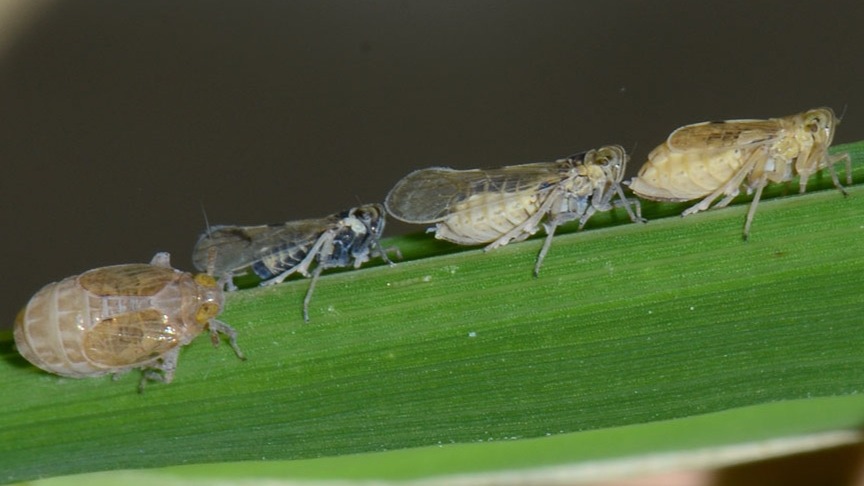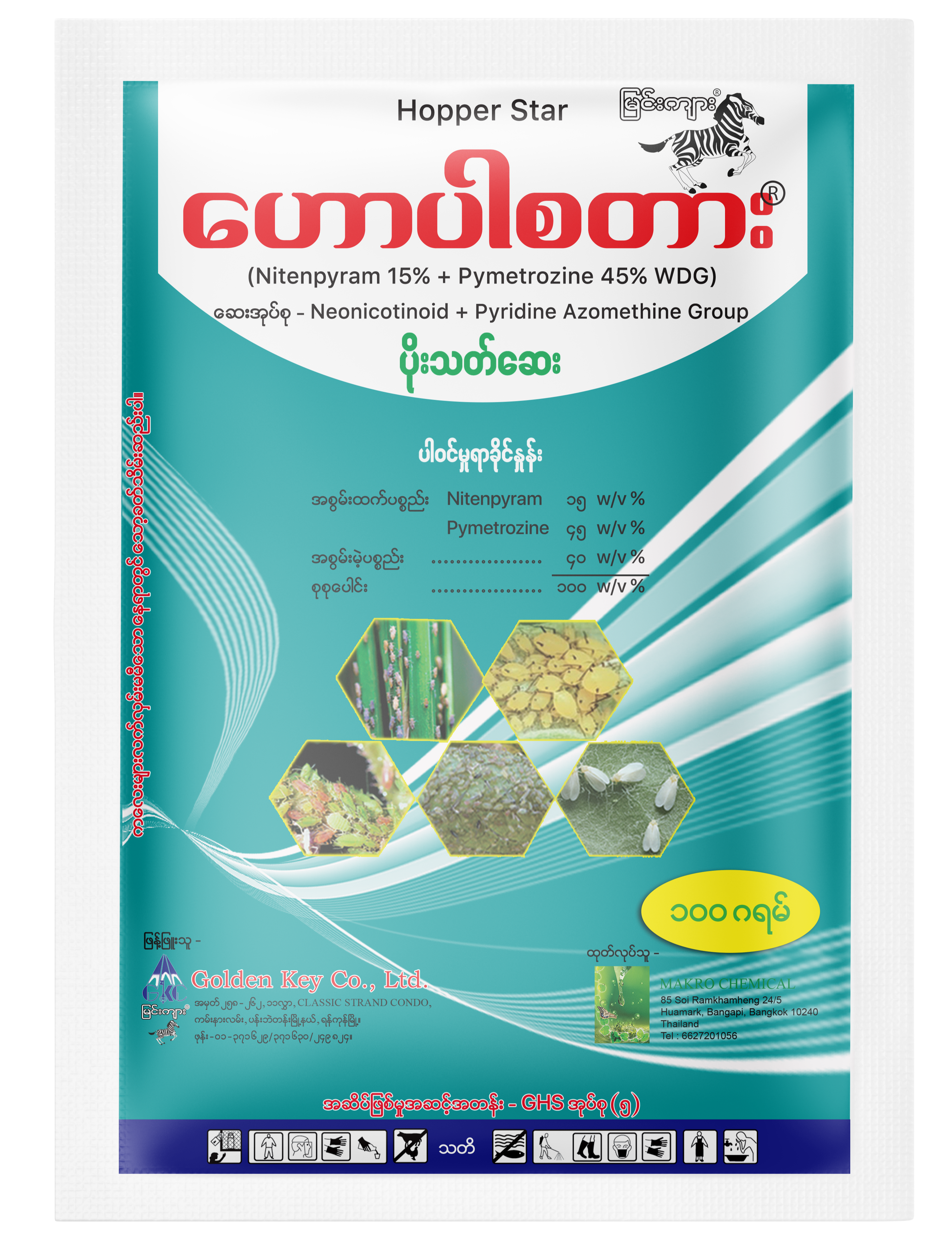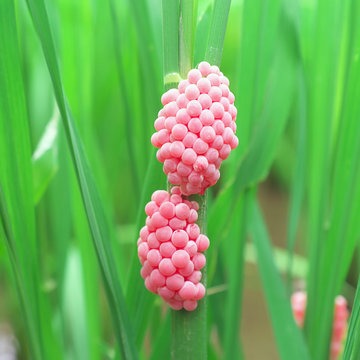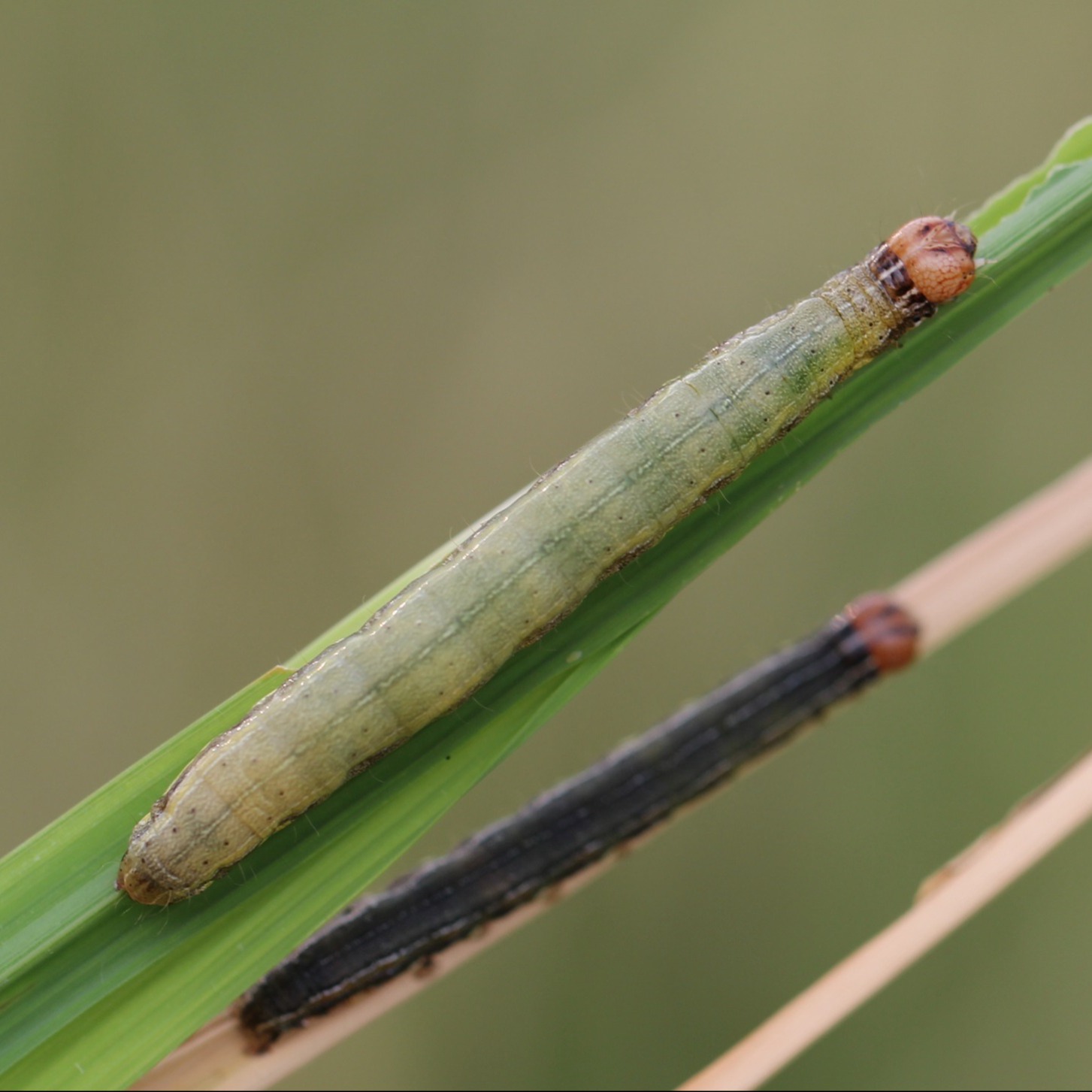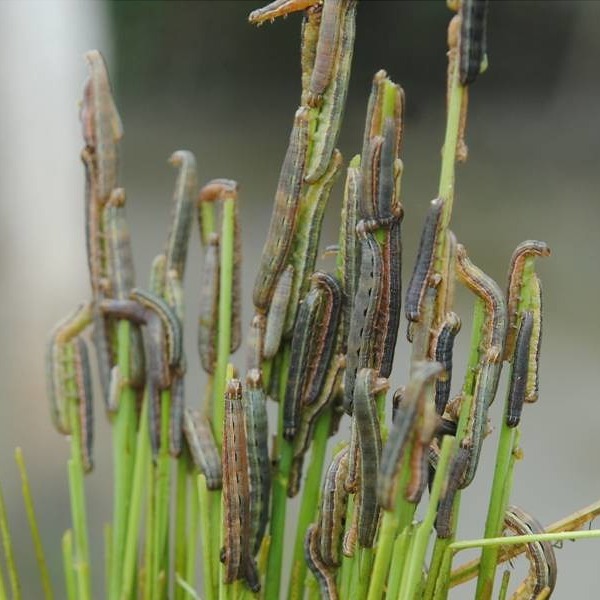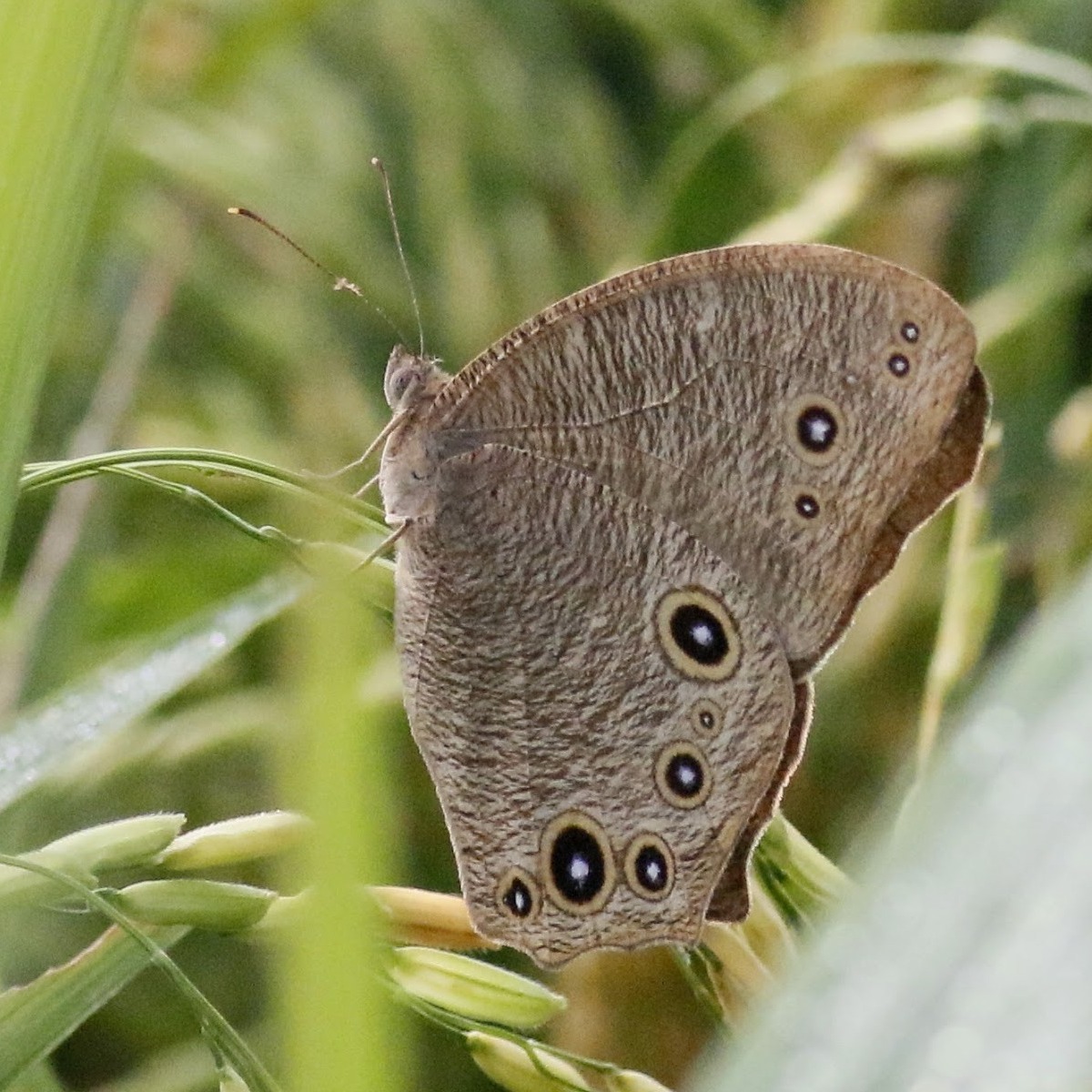Brown Plant Hopper
Symptom
At the nursery stage, the incidence is low, and brown plant hopper and white-backed planthopper attacked starting from the reproductive phase. The nymphs and adults suck cell sap at the base of the rice plant and the leaf surface. Older leaves of affected plants turn yellow and later acquire a rust-red apperance, spreading from the tip to the midpoint of the leaf, then gradually dry up and die. It is often found in fields as a patch. This feeding damage is commonly referred to as "hopperburn" or "Nito". The honeydew produced by the hoppers serves as a medium for mould growth, which imparts a smoky hue to the paddy field. The number of grains and panicle length decrease when rice is infested at the panicle initiation stage. During the heading stage, damaged glumes become brown and some remain unfilled. Grains do not fill fully and ripening is delayed when plants are attacked at the maturation period.


